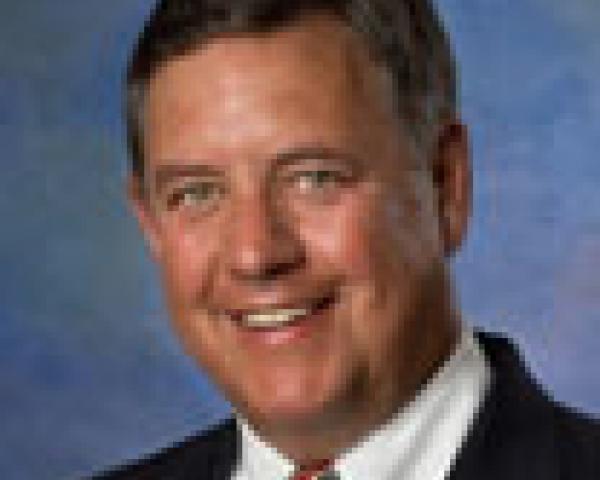How do you manage risk when your company is the biggest employer in the U.S. other than the federal government? Very carefully -- and very well, if you're K. Max Koonce II, the senior director of risk management at Walmart, until recently, when he took a senior position at Sedgwick. You do that partly by taking advantage of an extraordinary amount of data to identify potential problems, to use outcomes analysis to greatly shrink the number of litigation firms you use, to be highly selective about doctors used for workers' comp and even to set up a full-sized, in-house third party administrator.
But let's begin at the beginning:
Koonce was born in Mississippi, but his family moved to Bentonville, AR, where he has lived most of his life with his wife and family. He attended Harding University, a private liberal arts university located in Searcy, AR, where he graduated with a BBA in economics. Thinking that economics was not as challenging a career as what he aspired to, Koonce attended the University of Arkansas William Bowen School of Law to obtain his J.D.
He was immediately hired by Walmart upon his graduation in the '90s and was given the responsibility to set up Walmart's internal legal defense system for the roughly 30,000 Walmart employees at the time. He and his in-house team of legal aides handled all of Walmart's workers' comp and ultimately much of its liability claims. The program worked so well that the governor of Arkansas appointed Koonce as an administrative law judge for the state workers' comp commission in 1997, with Walmart's blessing. With Koonce's departure, Walmart eliminated the internal legal program and transferred its litigation to outside legal firms.
By January 2000, Koonce was appointed by the governor to the Arkansas Court of Appeals. With a vacancy in the State's Supreme Court, Koonce ran for State Supreme Court in a partisan election. During the campaign, he shared fond memories of attending all kinds of civic events, fundraisers and county fairs around the state. When he failed to get elected, Walmart brought him back to head its risk management program that same year. The program grew dramatically with his return.
Apart from the U.S. government, Walmart is the largest employer in North America. Nearly 20 million people shop at Walmart every day, and 90% of the U.S. population lives within 15 minutes of a Walmart. If Walmart were a country, it would be the 26th-largest economy in the world. Walmart manages 11,500 retail units in 28 countries; generates $482 billion in annual sales; and has 2.2 million employees (1.4 million associates in the U.S.). Koonce exclaimed that there was no other retail company to benchmark to, so his risk management department had to make up its own risk benchmarks. Interestingly, with a tightly managed work culture and such huge numbers to work with, Walmart's risk management statistical and actuarial claim calculations have proven to be consistently accurate for many years.
Walmart's risk management department has grown over the years to more than 40 risk management support personnel. Walmart divides its risk portfolio by working with two competing insurance brokers. Koonce said he had an incredibly talented and dedicated team of risk management professionals working at headquarters in Bentonville. "The analytics and metrics achieved by my experts," he said, "were as good as any in the insurance industry." He said that no relevant risk factors in Walmart's operation went unnoticed.
Walmart's workers' comp program is designed to include specific doctors and medical facilities to ensure consistent care of any injured workers. Walmart manages detailed feedback from all of its employees to continue to fine tune its workers' comp program. Koonce stated that risk management has always been a part of the Walmart culture, going back to its founding by Sam Walton in 1962; Walton wanted to help individuals and communities save money while ensuring that the company's operations adhere to ethical decision making, good communication and responsiveness to employees and stakeholder.
Using an "outcomes-based" approach to litigation management, Walmart's team relies on claims data analysis and metrics to choose, evaluate and consolidate the number of workers' comp attorney firms. Max notes: "This approach forms tighter relations with a smaller number of lawyers to create a 'one team' approach to litigation." In California alone, for example, the mega-retailer reduced the number of legal defense firms from more than 20 to three. The outcomes-based litigation strategy relies on a multivariate analysis using Walmart's own claims data. Metrics are used to benchmark attorney performance and align specific lawyers with cases depending on claim facts and knowledge about an attorney's unique skills and experience. At Walmart, claims examiners generally choose specific defense attorneys to maintain a continuing team relationship.
Besides retail store risks, Walmart also manages the largest private trucking firm in the U.S. and delivers more prescriptions than any other retailer. Asked if he had experienced any highly unusual claims during his tenure at Walmart, Koonce said that Walmart is all about awareness, control and consistency and that claims were nearly always within an expected parameter (i.e. slip-and-fall claims) and not horrific, as some employers experience. Each store location, including Sam's Clubs, have conscientious safety response teams that sweep the stores periodically during their shifts and respond immediately to any safety hazards like floor spills.
A unique feature of Walmart is its subsidiary, a third party claims administrator (TPA) called Claims Management Inc. (CMI), at which Koonce served as president. Located in nearby Rogers, AR, CMI administers the casualty claims, including workers' compensation, for all Walmart stores. Although most companies with national operations use insurer claims administrators (for non-self-insured operations), or multiple regional TPAs, Walmart's CMI operation is a sizable TPA of its own with 600 employees. As Koonce explains, "CMI provides the claims oversight the company feels is desirable to maintain good control, communication and consistency."
Unlike most national companies, Walmart has been able to maintain a highly efficient and focused risk management program through a tight-knit organization consisting of mostly local or regional employees who live and work in Benton County, AR (pop. 242, 321). Most of Walmart's managers have been employees who have worked their way up the corporate ladder. Sam Walton once said: "We're all working together; that's the secret."
Koonce left Walmart in September to serve as senior VP of client services for Sedgwick Claims Management Services. He was succeeded by Janice Van Allen, director of risk management at Walmart, who started as a store department manager in 1992. Koonce said he's doing what he loves most at Sedgwick -- helping risk managers achieve success with their internal programs.









